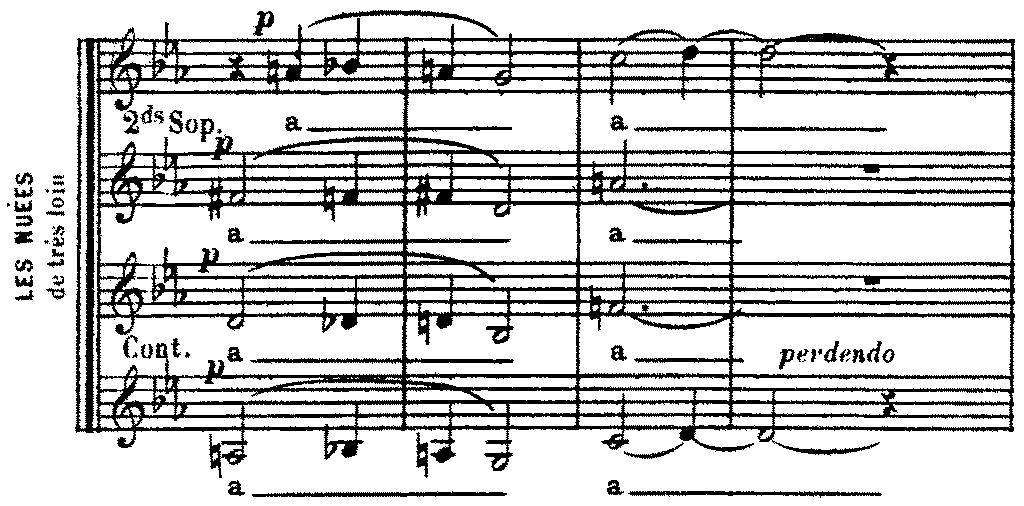Dramatic Vocalise Database
Vincent d’Indy (1851–1931)
Fervaal, Op. 40 (1889–93, orchd 1893–95)
The composer Vincent d’Indy (1851–1931), whose uncle Antonin was an intimate friend of Berlioz, used the latter’s Traité d’orchestration extensively to educate himself as a youth.1 That he could have witnessed a performance of Les Troyens is doubtful, let alone the “Chasse royale,” since it was cut after the first performance. However, d’Indy commented extensively on both Les Troyens and Weber’s Der Freischütz in his three-volume Cours de composition musicale.2
In his strongly Wagnerian opera Fervaal (1889–93), d’Indy employed dramatic vocalization in both acts 2 and 3. In act 2 an offstage women’s chorus, labeled in the score as “Les Nuées” [“the clouds”], sings the vowel “a” accompanied by an offstage saxophone quartet, similar to Berlioz’s offstage saxhorn quartet in the “Chasse royale.” These “clouds of fog” as the score further describes them, slowly turn round the goddess Kaito and “engender distant harmonies” by their movement.3 Throughout the section the saxophones and voices exchange melodic material of a similar nature. After Kaito departs, Arfagar calls out to her in a panic followed by an answer from the now a capella women’s chorus (see Example). The mysterious, supernatural chorus magically transforms Arfagar’s mental state to one of spiritual contentment.

d’Indy, Fervaal, act 2, scene 1
4At an evening soirée at the house of Ernest Chausson in late 1893, Claude Debussy heard d’Indy play through sections from Fervaal—four years before the premiere. Following this, Debussy was asked to play through his own work-in-progress Pelléas et Mélisande with d’Indy serving as page turner.5 Debussy would write in 1903, “If Fervaal still submits to the Wagnerian tradition, it is excused by its morality and its score for the grandiloquent hysteria that overwhelms so many Wagnerian heroes.” 6 It would seem a likely conclusion that it was d’Indy’s opera that inspired Debussy to use a wordless chorus in the last movement of his orchestral suite Nocturnes. However, Debussy’s earlier symphonic suite Printemps for orchestra, piano, and wordless chorus (SSAATT) (1887) predates their encounter. In addition, d’Indy orchestrated his opera during the two-year period following the soirée, possibly adding the offstage chorus in the process.
(Nauman 2009, 78–79)
Examples | Comments |
| Act 2, scene 1 (excerpt) |
Footnotes
1 Andrew Thompson, Vincent D’Indy and His World (Oxford: Clarendon, 1996), 11.
2 Vincent d’Indy, Cours de composition musicale (Paris: Durand, 1912), 118–21.
3 Vincent d’Indy, Fervaal (Paris: Durand, 1899), 326: “La lumière s’est étendue jusqu’au sol. De blanches formes de femmes faites de brouillard tournent lentement autour de KAITO, et leur mouvement engendre de lointaines harmonies.” [“The light extends to the ground. White forms of women made of fog slowly turn around KAITO, and their movement engenders distant harmonies.”]
4 Vincent d’Indy, Fervaal, 338.
5 Andrew Thompson, Vincent d’Indy and His World, 99.
6 Robert Orledge, “Fervaal,” in Grove Music Online, ed. Laura Macy, http://www.grove music.com (accessed 5 March 2005).